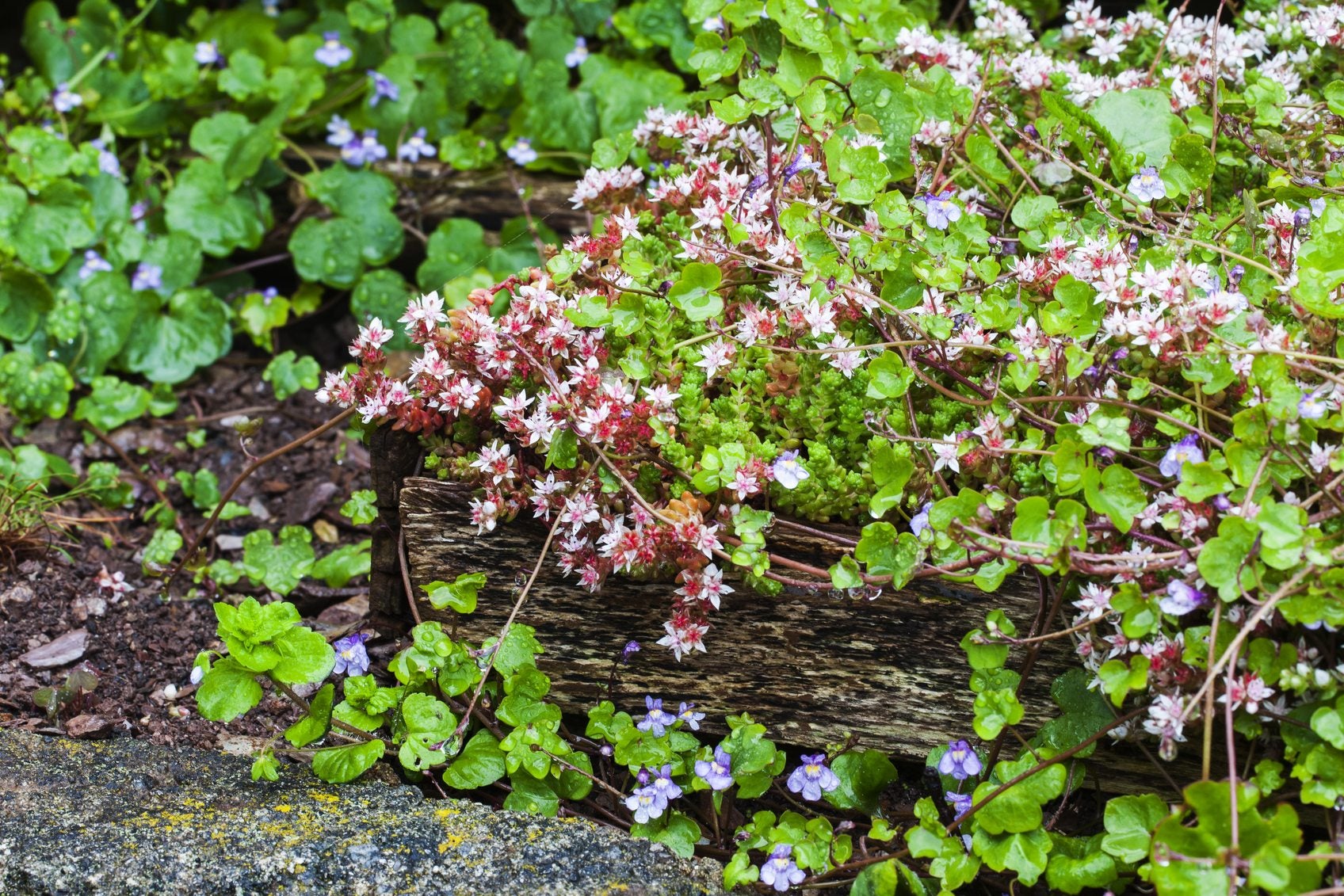English Stonecrop Care: Tips For Growing English Stonecrop


English stonecrop perennial plants are found wild in western Europe. They are common nursery plants and make excellent fillers in containers and beds. The tiny succulents grow on rocky slopes and sand dunes which illustrates their hardiness and ability to thrive in low fertility areas. English stonecrop plants are also drought tolerant. There are very few tricks on how to grow English stonecrop sedum as they are a low maintenance, nearly fool-proof plant to grow.
English Stonecrop Plants
If you are looking for a plant that you don’t have to baby, spreads over time to form a lovely, low carpet, and produces pink starry flowers, look no further than English stonecrop (Sedum anglicum). These plants are in the Crassulaceae family of succulents. English stone crop establishes easily from bare root and requires little extra care to root and grow. These minimal care plants have even been used in living roofs, composed of hardy, tolerant plants that insulate and provide durable protection. Stonecrop plants come in a variety of sizes and forms. These plants are succulent and have chubby, fleshy characteristic leaves in rosettes and thickened stems. The foliage and stems are bright green when young, deepening to bluish green at maturity. English stonecrop is a ground hugging form that tends to spread out stems and roots at internodes. Over time a small patch of English stonecrop can become a large, dense mat. The flowers are on short stalks, star-shaped, and white or blushed pink. The blooms are very attractive to bees and hoverflies as well as certain species of ants.
How to Grow English Stonecrop Sedum
Growing English stonecrop is as easy as getting your hands on a piece of the plant. The stems and leaves will fall off even with a gentle touch and often root just where they land. English stonecrop produces from seed, too, but it will take quite some time for appreciable plants. Far easier to nudge off a stem or few leaves and transplant the rosettes to acidic, well-drained soil. A little watering is needed at establishment but the plant will root in just a few weeks and become drought tolerant thereafter. These plants are fertilizer sensitive but good organic mulch can help gradually add nutrients to the soil when growing English stonecrop.
English Stonecrop Care
These plants are good choices for the novice gardener. This is because they establish readily, have few pest and disease problems, and are low maintenance. In fact, English stonecrop care is really negligible except for occasional watering in very dry periods. You can choose to divide the clumps and share them with a friend or let the patches gambol playfully across your rockery or other landscape feature. English stonecrop also makes an excellent container plant and will trail lightly in hanging baskets. Pair this sprightly little plant with other moisture smart flowers and succulents for xeriscape appeal.
Gardening tips, videos, info and more delivered right to your inbox!
Sign up for the Gardening Know How newsletter today and receive a free copy of our e-book "How to Grow Delicious Tomatoes".

Bonnie Grant is a professional landscaper with a Certification in Urban Gardening. She has been gardening and writing for 15 years. A former professional chef, she has a passion for edible landscaping.
-
 Zinnias On Repeat: 10 Glorious Cut-And-Come-Again Varieties For Endless Summer Bouquets
Zinnias On Repeat: 10 Glorious Cut-And-Come-Again Varieties For Endless Summer BouquetsThese zinnia varieties keep giving all summer, making them the perfect choice for dedicated cutting gardens – or just the occasional homegrown bouquet.
By Ellen Wells
-
 Create A Romantic Garden Straight Out Of Bridgerton: Regency Era Romance In Your Garden
Create A Romantic Garden Straight Out Of Bridgerton: Regency Era Romance In Your GardenTry some romantic garden ideas straight out of Bridgerton. Flowers and gardens in the Regency era were lush and charming and you can get the same look!
By Bonnie L. Grant